National Trust Ticket Portal

- Home Visit our homepage
- Search Search this site
- My Account Manage your details
- FAQs Got a question?
- Call us 0344 249 1895
- Email us [email protected]
- Visit our website https://www.nationaltrust.org....
- Places Change place
- 2 Willow Road - Admissions

2 Willow Road - Guided Tour
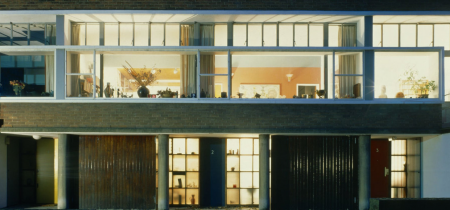
Thank you for booking your visit. Click below for more information on planning your visit. Find out what to expect from your visit and check which facilities are open here .
Please note:
2 Willow Road is open for pre-booked guided tours at 11am, 12pm, 1pm and 2pm, starting on the hour. Pre-booked independent viewing is available 3pm, 3.20pm and 3.40pm. Sorry, no toilets, shop, cafe or car park but public facilities nearby.
This booking is for a guided tour.
National Art Pass holders should book as NT members, typing “National Art Pass” as your member number. You will be asked to show your membership card upon arrival for your visit.
If you would prefer to book over the phone, please call 0344 249 1895.
Ticket options
Please bring your membership card to show on entry. Please select one ticket per member. National Art Pass is also valid for entry – type “National Art Pass” for member number when booking.
Non-member adult, aged 18 years and over
Children under 5 years do not need a ticket.
Family ticket admits 2 adults and up to 3 children aged 5-17 (under-5s don’t need a ticket).
Family ticket admits 1 adult and up to 3 children aged 5-17 (under-5s don’t need a ticket).
Please book a complimentary ticket for an essential companion/carer, accompanying a disabled visitor.
0 items selected
- Email our Central Box Office: [email protected]
- Call us : 0344 249 1895
- View company information
- Branch Address : Hampstead, London, NW3 1TH
Our payments are processed using : SagePay
- Privacy Policy
- Terms & Conditions
- Accessibility Statement

I'm having trouble with my purchase!

Tell me more about DigiTickets!
Our website uses necessary cookies to complete your checkout.
We would also like to set optional cookies for analytics to help make improvements to the website and for marketing purposes. These will be set only if you accept below.
For more information please see our Cookie Policy within our Privacy Policy .
Are you still here? Your session will end soon due to inactivity.
Your session has ended due to inactivity
Something's gone wrong. Please return to the homepage and try again.

Posted on Published: 12th March 2022 - Last updated: 21st April 2022 Categories London History
By: Author Lauren Kendrick
2 Willow Road: Ernö Goldfinger’s Modernist Masterpiece in Hampstead
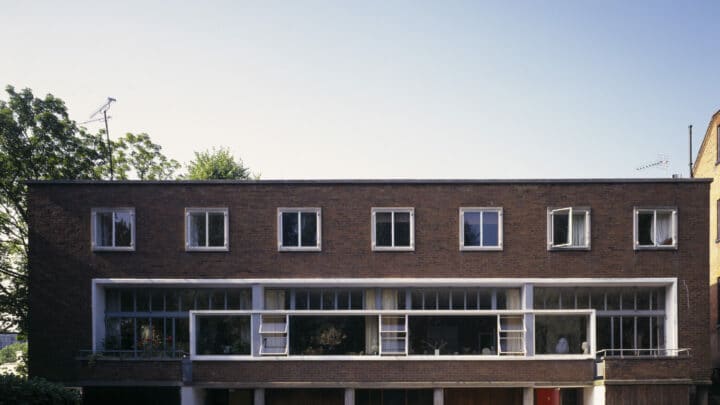
Love This? Save and Share!
Discover 2 Willow Road: Ernö Goldfinger’s modernist masterpiece in leafy Hampstead.
Words by Bradford Watson
If you’re like us, you’ll take any excuse to visit Hampstead Heath , but did you know that one of London’s most surreal houses is right next door?
Admittedly, 2 Willow Road is so unassuming that even we had to double back to find Ernö Goldfinger’s Modernist masterpiece of a home.
But hidden just south of the sprawling heath is a house as dreamlike as a Wes Anderson scene.
And while its controversial architect may be known for his larger scale Brutalist high rises , 2 Willow Road stands as a fascinating example of the intricate design and whimsy that made Modernism so appealing.
So why is the Ernö Goldfinger house worth visiting and how did its designer become so unpopular that he inspired a famous Bond villain? Let us fill you in.
What’s the Story Behind 2 Willow Road?
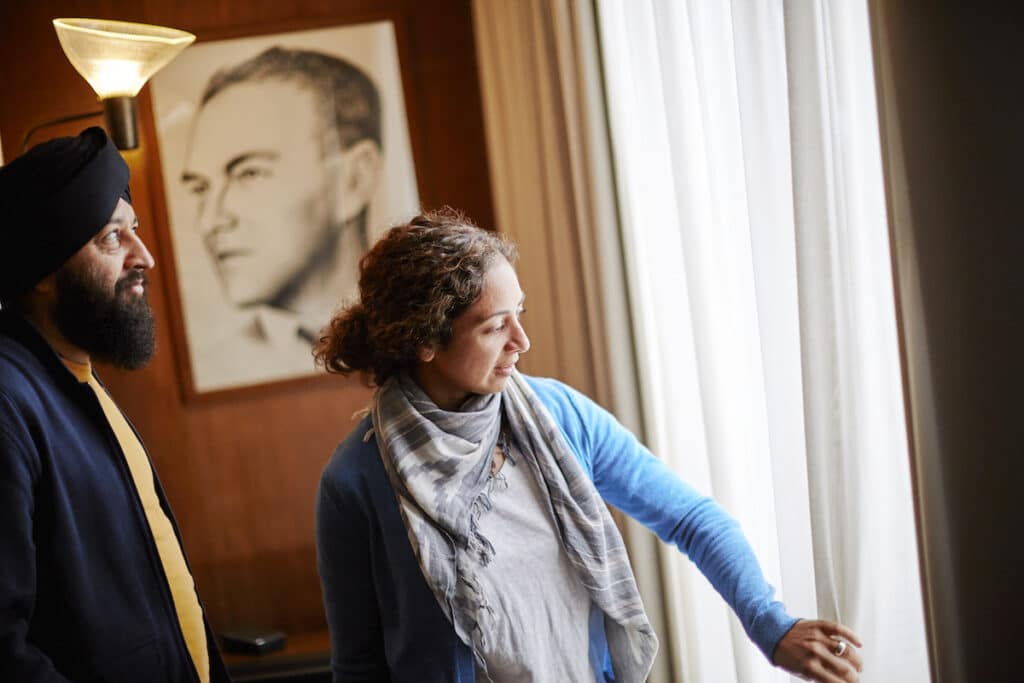
Who Was Ernö Goldfinger?
Ernö Goldfinger was an influential – and divisive – figure in British architecture, whose work wasn’t properly appreciated until late in his career.
Born in Hungary in 1902, Goldfinger studied in Paris before moving to London in the middle of the 1930s, where he initially designed building interiors and shop fronts.
Following the end of the second World War, British housing stock was a little worse for wear and as part of the British Modern Movement, Goldfinger began to design elegant social housing as an answer to the housing crisis.
Crucially, he believed communal living could and should elevate working people’s lives – a legend’s mentality if you ask us.
Ernö Goldfinger and the Brutalist Movement
Overlapping with the Marmite style of Brutalism , which took off in the middle of the century, Goldfinger’s bold high-rise design was demonstrated at scale in the Trellick Tower in Notting Hill .
You can also see it in the Balfron Tower and corresponding Carradale House in Poplar, both of which are still standing today and beloved, at least by those who appreciate the – let’s politely call it ‘moody’ – aesthetic
Building Willow Road
Despite his later success, Goldfinger’s Willow Road home, one of his first major projects in London, was almost too modern and very nearly undone before it got started.
Initially planned as a tower block, Goldfinger bought a plot of land just south of Hampstead Heath in 1937, which he claimed contained “four derelict worm-ridden cottages” in need of demolition.
After much haggling and several rejected planning permissions from the council, Goldfinger finally got the go ahead to build a terrace of three three-storey houses based loosely on Georgian design. With its scope reduced, Goldfinger would dedicate himself to the project’s ambitious interior design.
Ian Fleming: Confirmed Hater
Willow Road’s naysayers were not limited to local authorities.
Goldfinger’s plan was opposed by many members of the English intelligentsia, many of whom lived in Hampstead, including Ian Fleming, author of the James Bond novels, who took particular offence to the destruction of traditional Georgian buildings in his backyard.
In a very un-Bond like move, Fleming channelled his anger into his work, rather than directly confronting his soon-to-be neighbour, which is how the tall Eastern European modernist architect Ernö Goldfinger became the short, fat Soviet spy Auric Goldfinger, with his lethal bowler hat.
It was not difficult for Bond fans to trace the line from one Goldfinger to the other, and apparently for years after the 1964 film was released, Ernö’s home was besieged by prank callers serenading the architect with Shirley Bassey’s theme song.
Goldfinger Gets the Green Light
But the council’s tight strictures and fierce local opposition only fired up Goldfinger to produce his most detailed and interesting work, producing the surreal practical flourishes that make Willow Road such an impressive home.
Willow Road was eventually built between 1938-9. The continuous terrace was designed so that Ernö and Ursula could occupy the middle and largest of the three houses while the neighbouring units would be sold.
And the Goldfinger home proved more than just a novelty quirk of the period. Ernö and his wife Ursula Blackwell would live for the rest of their lives, raising three children and even housing their elderly parents for a time.
Why is 2 Willow Road so Special?
As unimaginative new builds proliferate across the city, the Willow Road home’s resonance is stronger than ever.
Especially behind the symmetrical brickwork lines of the facade, where the interior of the house is a gem for architecture buffs and Instagram enthusiasts alike.
It Has a Spiral Staircase
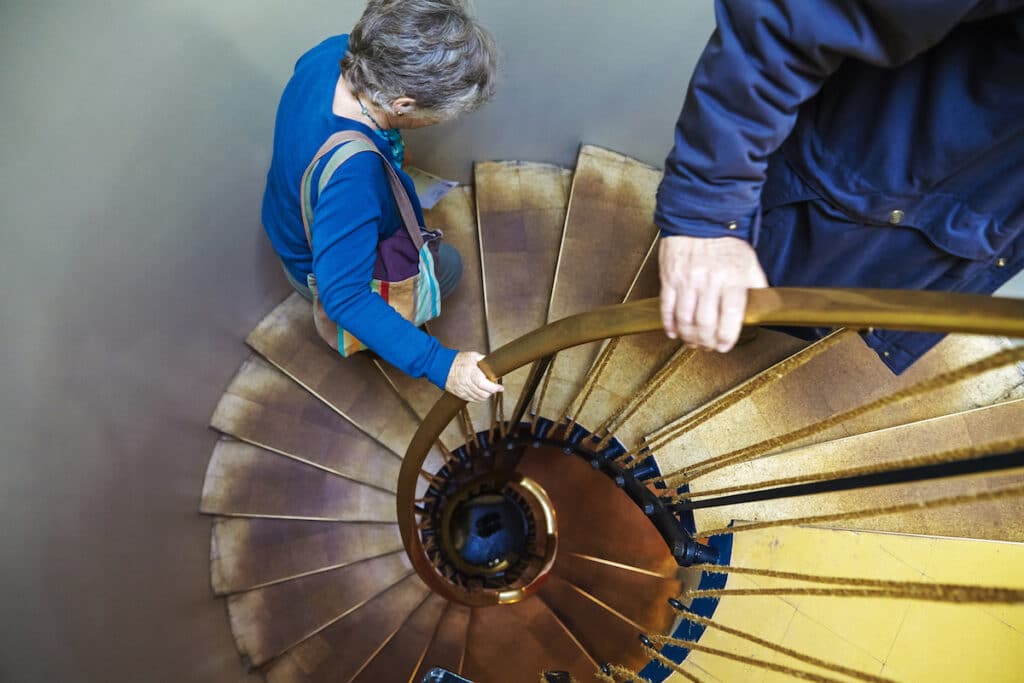
Who doesn’t love a spiral staircase? The pleasingly tight curve of the stairwell as you’re corkscrewed upwards, the vertiginous thrill of watching the downstairs disappear through the step slats, and of course the aesthetic snail shell shape of the pictures we snap.
Turns out Ernö Goldfinger was a fan, too.
In what he deemed the “hierarchy of space,” there are very few corridors or liminal connecting spaces in 2 Willow Road.
Instead rooms stretch in fluid lines and all three storeys are connected by a beautifully off-centre spiral staircase leading up to the third floor landing and the overhead circular skylight which maintains the light and airy feel of this central spine.
The Rooms Can Expand or Contract
Have you ever wanted to block out your flatmate? We couldn’t possibly comment, but it seems Goldfinger had all of us in mind when he created the flexible walls in 2 Willow Road.
The house is supported entirely by concrete external columns, leaving less of a burden for the interior walls, many of which are literally folding partitions that can be drawn or opened to suit.
This comes in handy if you’re an artist, like Ernö’s wife Ursula, who was able to hive off her studio from the dining room using a collapsible wall connected to a seamless piano hinge. Isn’t that just a working-from-home dream?
It’s Like Ernö Never Left
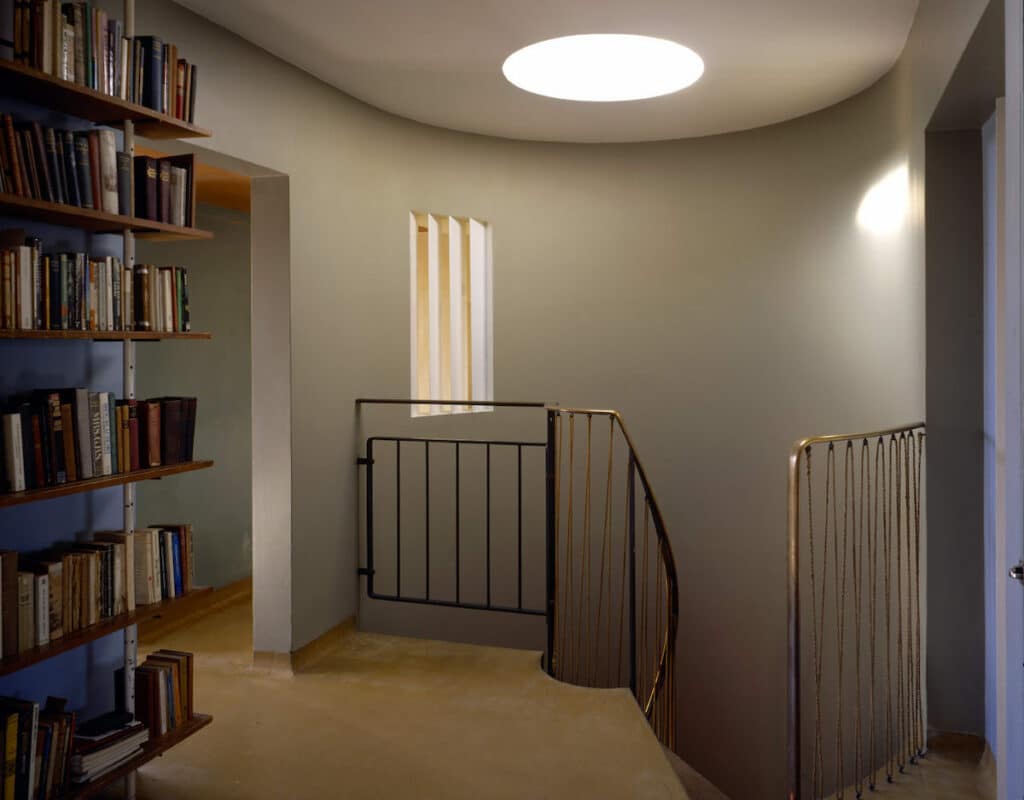
Satisfying the nosy neighbour in us, we love the preservation of the house, with jars of food on worktops, design books lining shelves and papers arranged on his desk, as if Ernö’s popped out for a lunchtime wander across the heath.
When the National Trust acquired the property in 1995 they took pains to keep its lived-in quality. So, while there is an archive of Goldfinger’s papers, as well as a short film presented before every tour, it feels much more like visiting someone’s home than it does a museum.
It’s in Goldfinger’s exhaustive attention to detail that his personality persists.
The marriage of function and elegance that he attempted at scale later in his career is evident here in the minutiae of the furniture that he lovingly designed: the desk drawers swivel on a half-circle so that the contents of all three can be seen at once, the mailbox is integrated into the beautiful glass brickwork and shelves surrounding the front door.
Even the wall hook for his car keys is not only useful but serves to declutter the hallway.
If you’ve ever daydreamed about your perfect house (our hands are up – we’re saddos) snooping around Erno Goldfinger’s Modernist triumph is a great hidden gem.
How to Visit 2 Willow Road? Practical Information and Map
Take the Overground to Hampstead Heath for a five minute walk south, or the Hampstead tube station which adds another ten minutes by foot.
The terrace block is easy to miss so make sure you look out for the playpark on the south-eastern border of the Heath – 2 Willow Road is on the other side of the fence.
Tours of the Goldfinger home are arranged by the National Trust between March and October. Pre booking is essential and we’d advise visiting on a Thursday late afternoon if you can, although tours also run on Saturdays.
Tickets cost £4.50 for a child, £9.00 for an adult, £22.50 for a family ticket, or entry is free for National Trust members.
Address: 2 Willow Road, Hampstead, London NW3 1TH
Discover More of Ernö Goldfinger’s London
- London’s Coolest Brutalist Buildings
- Trellick Tower: Brutalist Beauty in Notting Hill
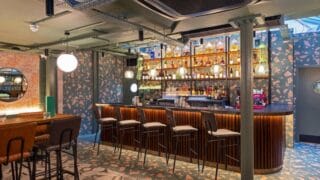
LET'S GET SOCIAL!
London x London is the insider’s guide to discovering the best of London.
We delve into the cool, interesting and quirky spots that make London such a dynamic city, telling you the best things to do, eat and drink along the way.
Tired of the same old dull suggestions? Want to know where to find London’s secret bars, tastiest eats and weirdest finds? We provide practical guides that help you do just that.
Find Out More
Recently Published
- Eltham Palace: Discovering South London’s Gorgeous Art Deco Secret
- Staying At: The Laslett, Notting Hill Review
- Carreras Cigarette Factory: A Curious Reminder of London’s Egyptian Art Deco Craze
[ Skip to content ] [ Skip to main navigation ] [ Skip to quick links ] [ Go to accessibility information ]
National Trust, 2 Willow Road
- Venue information
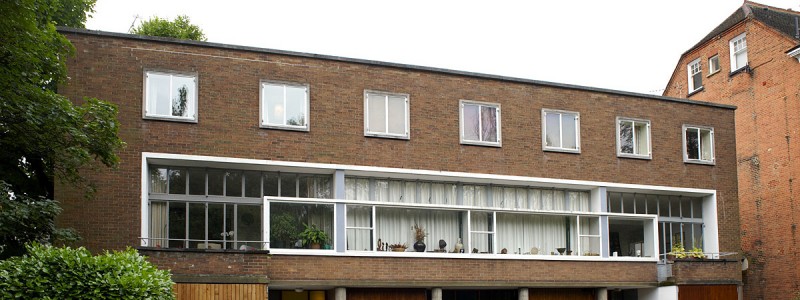
National Trust
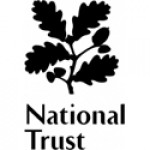
Open to the public
Historic house or home in Camden
65 artworks
Part of National Trust
2 Willow Road, Hampstead, London, Greater London NW3 1TH England
020 7435 6166

National Trust artworks can also be found at these venues
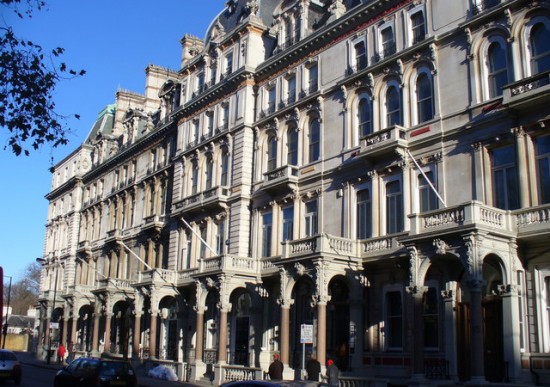
Kidderminster

near Penrith
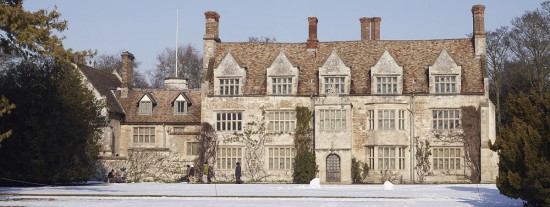
near Barnstaple

near Leighton Buzzard
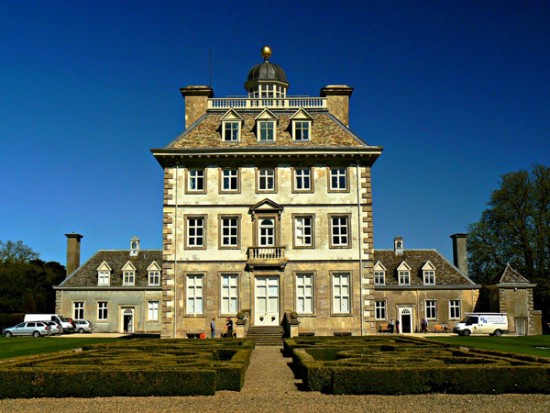
near Shrewsbury

near Marlborough
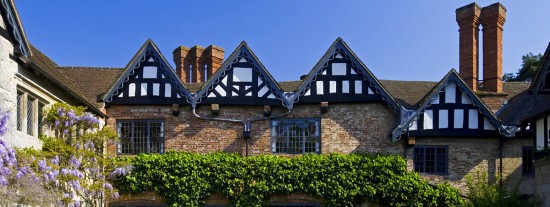
Baddesley Clinton

near Ilminster

- View all 212
Venues in Camden
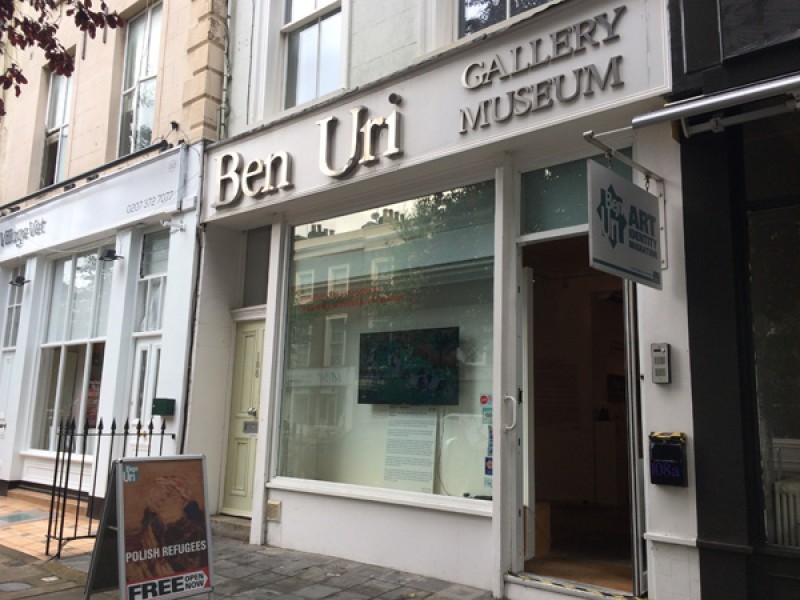
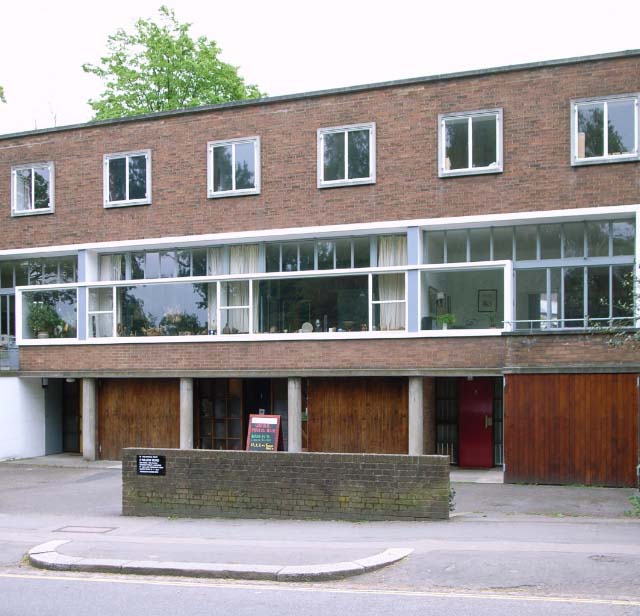
2 Willow Road
2 Willow Road is a modernist house located in Hampstead, north London. Designed by the famous architect Erno Goldfinger in 1939, it is now a National Trust property open to the public for tours.
The house and its neighbours, 1 and 3 Willow Road were built as part of a development project in the 1930s. Goldfinger, influenced by the work of Le Corbusier and the Bauhaus movement, designed the houses to be a new type of urban living. He believed homes should be designed for the modern world and be functional, efficient, and beautiful. 2 Willow Road is a perfect example of this design philosophy.
The house is made of concrete and steel, with large windows and a flat roof. The layout is also very modern, with an open-plan living and dining area and a spiral staircase connecting the three floors. The house also has many unique features, such as a rooftop terrace, a balcony, and a basement cinema.
The house is also an excellent example of Goldfinger's attention to detail and his interest in materials. The house's concrete exterior is lined with brick and the interior is finished with a variety of materials such as marble, oak, and glass. Goldfinger also designed many of the furniture and fittings for the house, including the curved oak staircase and the built-in storage units.
Goldfinger lived in the house with his wife Ursula and their two children from 1939 to 1964. It is said that the house was a reflection of their lifestyle and personalities. They had an impressive art collection, which included works by Picasso, Miro, and Léger. The house also had a workshop and studio space for Goldfinger's architectural projects, and it was a place where he entertained friends and clients.
After Goldfinger died in 1987, the house was donated to the National Trust and opened to the public as a museum in 1996. The house has been restored to its original condition and visitors can see it as it was when Goldfinger lived there. The house also has an exhibition space that features temporary exhibitions about Goldfinger's life and work.
Its design, materials and attention to detail make it a must-see for anyone interested in architecture, design or the history of the Modern Movement. Visiting 2 Willow road is like taking a step back in time and getting a glimpse of how a modernist architect and his family lived in the mid of 20th century. It is an excellent opportunity to learn about the life and work of Erno Goldfinger and to experience the beauty and functionality of Modernist design.
"Have nothing in your house that you do not know to be useful, or believe to be beautiful."
Look out for…
- Art by Henry Moore, Max Ernst and Bridget Riley.
Museum Video
Museum Facilities
Audio Guide
Wheelchair Access
Photography
All information is drawn from or provided by the museums themselves and every effort is made to ensure it is correct. Please remember to double check opening hours with the venue concerned before making a special visit.
© Copyright 2014—2023 Museums London (unless stated otherwise). Information believed to be correct at the time of publication.
The Best Site for Flight Attendant Travel Tips and Tales
- Airline Romance
- TRAVEL GUIDES
Visit Goldfinger’s Modernist House at Two Willow Road, London
- By travellikeaflightattendant
- Jun 03, 2017
- Design Travels

Situated at 2 Willow Road in London, this house was the first Modernist structure acquired by the National Trust.
Although the building it replaced was a dilapidated ruin, local council and residents fiercely opposed its construction. Author Ian Fleming , a Hampstead Heath neighbour, disliked the plans for 2 Willow Road so much he named a Bond villain after the avant-guarde architect. But Goldfinger’s creation has an enduring appeal.
Goldfinger and Contemporary Architecture
Goldfinger was born in Budapest in 1902 and studied architecture at the Ecole des Beaux Arts in Paris. He supported contemporary ideals but favoured structural rationalism – that is, wood must look like wood, steel like steel – over Le Corbusier’s white box approach.
Even so, Goldfinger tempered his plan by covering the concrete at in red brick and painting the metal windows white in order to maintain harmony with the surrounding Georgian houses.
Inside 2 Willow Road
Visitors enter this former family home through a small, dim foyer. An initally intimidating spiral staircase demonstrates Goldfinger’s attention to ergonomic detail. The treads are wide enough where needed and the risers are shorter than expected, making the climb easy.
The reason Goldfinger designed a tiny entry is evident once the main floor is reached. A wall of north facing windows captures light from the heath across the street all day and combined with the higher ceiling, creates a dramatic contrast.
Modernist Designs and Materials
The living room, dining room and Goldfinger’s office are all on this level. A series of folding and sliding doors allows them to become one large area for entertaining. These rooms are masculine and imposing, like the man himself. Walls are covered in oak or mahogany-veneered plywood or painted in colours from the palettes of artist friends like Max Ernst and Marcel Duchamp, whose works are displayed here.
Ingenious built-ins preserve the sense of pure volume in this space and the furniture, designed mainly by the architect himself, has an industrial edge.
The all-white master bedroom is on the top floor. Small windows create an intimate feel though the room is bare except for a low futon bed, a chair and a bank of bookcases. Capacious storage is hidden behind a wall of doors.
Goldfinger and His Plans for 1, 2 and 3 Willow Road
Along with charts marking the heights of the Goldfinger children as they grew, the upstairs nursery now contains models and floor plans of 1, 2 and 3 Willow Road. This historic house is sandwiched between two smaller terraced residences the architect built in order to fund the entire project. One was initially sold while the other was first rented and later sold.
National Trust Legacy of Goldfinger
Goldfinger died in 1987 and his wife Ursula stayed in the house until her death in 1991. The National Trust acquired the house in 1994 when the Goldfinger children left it to them via the Treasury, in lieu of paying inheritance tax. Most of the contents, including tea bags and Christmas pudding, were in the bequest. Magazines and drafting tools are lying about and it seems as though the family might return at any moment.
Since 2 Willow Road was opened to the public in 1996, acceptance and admiration of Goldfinger’s work has grown. The building that was once reviled is now a modernist jewel in the National Trust’s crown. Joint tickets are available with nearby 17th-century Fenton House.
For more information on how to enjoy any trip, download my eBook Travel Like a Flight Attendant. It’s filled with money-saving travel tips and advice I learned from my thirty years (and twenty million air miles) as a crew member.
Happy travels!
©2017 TRAVEL LIKE A FLIGHT ATTENDANT™
Share this:
- Click to share on Twitter (Opens in new window)
- Click to share on Facebook (Opens in new window)
travellikeaflightattendant
You must be logged in to post a comment.

Unusual Homes: The Modernist Masterpiece at 2 Willow Road
Aug 21, 2017 | Company News

On the fringe of Hampstead Heath, 2 Willow Road is an archetype of modernist architecture, built and previously lived in by one of the godfathers of modernism: Ernő Goldfinger.
The Hungarian-born architect is renowned – and sometimes reviled – for his Brutalist residential tower blocks found across London. Trellick Tower in Kensal Town and Balfron Tower in Poplar are two especially striking examples, both Grade II listed buildings which have found admirers during the latter part of the 20th Century.
A post shared by severinodj (@severinodj) on Aug 16, 2017 at 12:22pm PDT
2 Willow Road was no less controversial, even while proving that Goldfinger could never be accused of building homes in which he would not want to live. The demolition of the Hampstead cottages that took place to make way for 1-3 Willow Road (the development consists of 3 terraced houses) was strongly opposed by author Ian Fleming, who retaliated by using the architect’s name for both the villain and title of his seventh James Bond novel.
The objection is, on some level, understandable. The squat, rectangular building is not conventionally attractive, looking to all intents and purposes more like gloomy school annex than an inviting home. Yet step indoors, and the house is an elegantly beguiling masterclass in modernist design.
A post shared by Beth Davis (@_beth_davis) on Jul 16, 2017 at 10:35am PDT
Paramount to modernism is an emphasis on natural materials, and honesty in using them – i.e. if you use wood it should look like wood, metal should look like metal, and so on. Anyone stepping inside 2 Willow Road is instantly enveloped by a variety of warm wood tones on all sides.
A post shared by Morley von Sternberg (@morleyvon) on Aug 27, 2016 at 12:26am PDT
Within the simple, geometric shapes of the rooms and furniture is a sense of sublimely ordered chaos. The rooms are variously divided by raised levels and removable walls, allowing for the reconfiguration of interior spaces as and when required. The walls are festooned with art and architectural paraphernalia, creating an enticing busyness in rooms that might otherwise end up feeling a little too regulated.
A post shared by ask_the_hoff (@ask_the_hoff) on Aug 15, 2017 at 8:02am PDT
The hallways offer a contrast with the rooms they connect, eschewing busy objects, patterns and textures in favour of a sparse minimalism broken up with clean, elegant lines.
A post shared by ✨????????♂️D E S I G N E R ????????♂️✨ (@pete_london) on May 14, 2017 at 7:44am PDT
The spiral staircase that connects the three floors of 2 Willow Road is a beautiful design from whichever angle it’s viewed. The metal handrail plunges downwards in a graceful nosedive, superficially connected to the floor by a crisscross of ropes where one might otherwise expect to find balusters. The chequered wood that forms the treads of the stairs creates a rich, intricate pattern as you descend.
A post shared by James Eaton (@eates21) on Jul 22, 2017 at 9:21am PDT
Goldfinger was a furniture designer as well as an architect, and his home was filled with details and objects that he had designed himself. This gold on this subtly ornate light fitting offsets the salmon pink wall of the dining room.
A post shared by CP (@camillepaillard) on Mar 25, 2017 at 10:54am PDT
This Goldfinger-designed chair again returns to the honesty of natural materials, with the gentle curves of the lounger balancing out the harsh angles present in much of the rest of the living area.
A post shared by Nick Goldfinger (@goldfinger.london) on Jul 7, 2017 at 1:54am PDT
A timeless architectural example of modernist living, you can visit 2 Willow Road yourself by booking via the National Trust .
At Residential Land we pride ourselves on the quality of our interiors. Click here to see the rental properties we have available.
- Property Advice
- Property News
- Living in London
- Company News
- Press and Media
- Tenant Testimonials
- Management Biographies
Recent Posts
- Property Week – The year of ESG, RPI and WFH
- Tenant Testimonial: Renting in Canary Wharf
- What to do in London this Autumn
- Celebrating 10 years of diversity
- Residential Land continue support of the Variety Club Children’s Charity
Property to Rent in London
- Circus Apartment Mid Term, E14
- Hill Street, W1
- Garden House, W2
- Thornes House, SW11
- 161 Fulham Road, SW3
- Pelham Court, SW3
- Circus Apartments , E14
- Somerset Court, W8
- Strathmore Court, NW8
- Palace Wharf , W6
- Thornes House Mid Term Let, SW11
- Luke House , SW1
- Merchant Square, W2
- Garrett Mansions, W2
- Grosvenor Hill, W1
- Strathmore Court Mid Term, NW8
- Palace Wharf Mid Term Let, W6
- Pelham Court Mid Term Let, SW3
- Merchant Square Mid Term Let, W2
- Prince of Wales Terrace, W8
London Area Guides
- Edgware Road
- Notting Hill
- South Kensington
- St John’s Wood
- Westminster

Chez Goldfinger
“Who would live in a house like this?” 2 Willow Road was the 1930s Hampstead family home of Erno Goldfinger . It is a Modernist masterpiece and one of London’s most thrilling open houses
2 Willow Road by Dennis Gilbert © National Trust
2 Willow Road is not the grandest sounding address in the National Trust’s repertoire. But then, it was never meant to be a grand address. Tucked away in leafy Hampstead, it is the Modernist family home of Erno Goldfinger, the Hungarian born architect and furniture designer famous for his imposing, love-it-or-hate-it creation, Trellick Tower , behind London’s Portobello Road.
Goldfinger completed 2 Willow Road in 1939, part of a terrace of houses in which he lived with his wife Ursula and their children until his death in 1987. The house caused some considerable controversy both during his life and after. A number of Victorian cottages were demolished to make way for the construction, much to the displeasure of a number of local residents including novelist Ian Fleming. So, yes – Fleming’s infamous Bond villain is indeed named after Erno Goldfinger.
After Goldfinger’s death, the National Trust acquired the property which again caused quite a stir – this was to be the first Modernist building to be acquired by the trust. And thank goodness it was.
You are here...
The 21st century pas de deux.
Maria Yacoob on Ihsan Rustem, James Cousins and the new intimacy in contemporary dance
Princess Julia x Stephen Jones
Three decades with London's fashion royalty
Finding Niemeyer
The enduring allure of Oscar Niemeyer's jetpack architectural vision
As I ascended the spiralling staircase of cork and thin rope banisters, I was struck by the amount of light there was, given the gloom of the day, flooding down from a beautifully crafted sky light in the roof, creating a calming sense of balance and making for a much better impression than the exterior.
The huge first floor living room houses an important collection of works by Henry Moore, Max Ernst and Bridget Riley amongst others, as well as original furniture and fittings designed by Erno Goldfinger himself. The faint aroma of Danish teak oil lingers in the air; at one end Goldfinger’s desk is immaculately arranged with a period 1960s hole punch, a Sellotape dispenser and an Anglepoise lamp – all terribly run of the mill at the time, but now with the appearance of something from an expensive and trendy Shoreditch interior design shop.
This is clearly a room that Erno Goldfinger and his family loved to live in and share with their friends. A central wall in the middle of this large first floor room cleverly concertinas to the side, which would have allowed them to fill the space with so many of the Hampstead intellectuals, artists and writers who came to use 2 Willow Road as something of a local salon.
As I climbed the cork spiral staircase to the final floor, I couldn’t help but feel I was about to be caught out. No one else was up there. No other visitors, no guide. Just me. The main bedroom felt so lived in , I thought. I slid open the wardrobe doors to the sight of clothes, hats, shoes and a whiff of mothballs. The bed was made up. There was a Penguin paperback on the side table, its pages yellowing. The large and light connecting bathroom had cabinets that remained filled with family photos, toothpaste and ointments.
The spiral staircase at 2 Willow Road
As I stood in the bathroom, slightly giddy from gazing up through a perfect circle in the ceiling, drawing my gaze to the battleship grey London sky above, I wondered, just for a moment, if 2 Willow Road really was in the hands of the National Trust. Perhaps I imagined the guide in the entrance. Perhaps the Goldfingers had just popped out, due home at any moment, to find me in this very private part of their home.
2 Willow Road is best visited alone. This isn’t Chatsworth and the space is limited. But more than that – it’s not really the sort of place you want to walk around surrounded by chatter. You won’t hear the endless National Trust visitor choruses of “oooh how lovely”, “not sure about those curtains” and “that colour would like nice in the front room”. This place has a calm confidence to its interior that commands you to hush. It is a shrine to true Modernism. C
2 Willow Road, Hampstead, London NW3 1TH 020-7435 6166; nationaltrust.org.uk

Ernő Goldfinger and a visit to 2 Willow Road, Hampstead
Jan 10, 2018 | Events
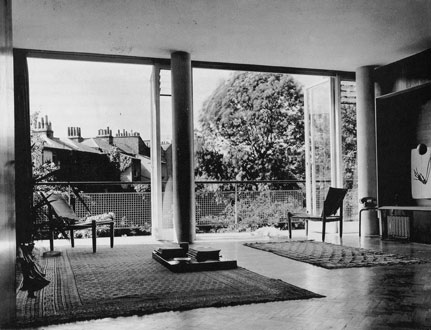
By Philip Carter
As a survey of domestic experience, the IHR’s 2018 Winter Conference— ‘Home: new histories of living’ (8-9 February)—ranges widely in its locations and forms of historical dwellings. At the same time, individual properties stand out. These include No. 2 Willow Road, Hampstead, now one of London’s best-known modernist houses, which makes two appearances at the Conference and its follow-on events.
Interior, 2 Willow Road, Hampstead
Goldfinger in Hampstead
The work of the Budapest-born architect Ernő Goldfinger (1902-1987) , Willow Road was from the outset a controversial design. Goldfinger’s critics—mindful of his training with Le Corbusier—feared the imposition of an angular concrete block in a part of London celebrated more for its fine Georgian architecture and, with the Heath, proximity to largely untamed countryside.
Goldfinger had initially sought to erect a modernist block of flats on the site, but reverted to three residential properties when permission for his larger scheme was refused. Leading critics of his revised project included the conservationist and future MP for Hampstead, Henry Brooke; and the author Ian Fleming whose opposition to Ernö’s architectural tastes resulted, it’s said, in his use of ‘Goldfinger’ as the name for one of 007’s most megalomaniacal villains.
In response, the architect justified his design for Willow Road in terms of its dominant use of brick, relative unobtrusiveness, and a profile no more angular than the much-loved surrounding terraces. In championing modernism Goldfinger was also supported by Hampstead’s avant-garde for whom structures such as Wells Coates’ Isokon Building demonstrated the potential of new residential forms.
Completed in 1939, Nos 1-3 Willow Road are now as much a feature of Hampstead domestic architecture as the neighbouring Georgian cottages. No. 2 Willow Road, the largest of the three properties, was taken by Goldfinger and remained a family home until the architect’s death there in September 1987. Acquired by the National Trust in 1993, the house been open for public viewings since 1996.
Though relatively modest in scale, Nos. 1-3 Willow Road established Goldfinger’s reputation as a coming, and controversial, architect. Denied the opportunity to build at scale and in concrete in pre-war Hampstead, Goldfinger’s Corbusian training was evident in his later expeditions in Brutalism— Balfron Tower , in Poplar, and Trellick Tower in Kensal Town. Today both towers and Nos. 1-3 Willow Road are Grade II* listed.
Trellick Tower
Willow Road and the IHR Winter Conference
Willow Road’s first appearance at the IHR’s Winter Conference comes on Thursday 8 February in the first of two ‘brown bag’ lunchtime slots . Thursday’s session sees short talks from three curators and archivists who’ll each tell the ‘biography’ or life story of a notable domestic object drawn from his or her collection.
From 2 Willow Road, the house steward Leigh Sneade will bring and speak about an artefact in Goldfinger’s collection, in part to highlight broader themes of mid-century modernism. Leigh will also introduce us to the interior spaces in which Ernö and Ursula Goldfinger lived and entertained, and which also became home to a significant art collection by the likes of Barbara Hepworth, Henry Moore, Max Ernst and Marcel Duchamp.
1-3 Willow Road, Hampstead
Our second Goldfinger event of the Winter Conference takes place on Saturday 10 March, and gives delegates the chance to explore 2 Willow Road in greater detail. This takes the form of a guided tour of the house, provided by its National Trust curators, and coming soon after the Willow Road’s reopening following renovation work for the 2018 season. Further details of how to enroll for the 10 March house tour will be made available at the Winter Conference in early February, and then on the IHR website.
For more information on the conference—including details on registration, bursaries for Early Career Researchers, and other extra curriculum activities—please visit the IHR Winter Conference blog .
- Architecture
- Latest Issue
- Digital Issue
2 Willow Road
Tagged as exhibition

Rio Kobayashi tells ICON how his Japanese and Austrian-Italian heritage influences his work

Triennale Milano’s 24th International Exhibition will explore the theme of inequalities

Giles Tettey Nartey talks craft and ritual in ICON’s Spring/Summer 2024 issue
Editor's choice.


Daylesford Organic launches its largest capsule homewares collection in partnership with Hugo Guinness

Jamie xx and Tekla celebrate the artist’s new album In Wave with striking capsule collection

Earl of East’s new Café collection playfully embraces circularity

Ukrainian creative studio Gushka creates woollen items that bring a new life to ancestral crafts

Meet Marina Cighir: The creative force behind Italian design studio Aina Kari
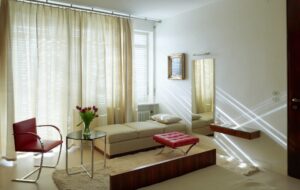
Architecture icon: Mies van der Rohe’s domestic masterpiece in Brno has survived everything the 20th century could throw at it
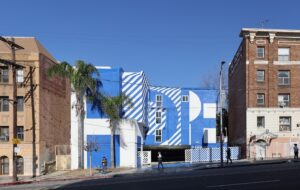
LA practice Kadre Architects is using design as a street-level tool for social change
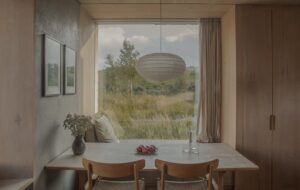
Wildland creates design-driven stays and experiences worth travelling for

A new book by Stefano Casciani offers an insight into Piero Lissoni’s work

Snøhetta designs minimalist interior for French skincare label Typology in Paris

Brick from a Stone launches at Clerkenwell Design Week 2024

A look inside Familien Kvistad’s colour-filled family home in Oslo
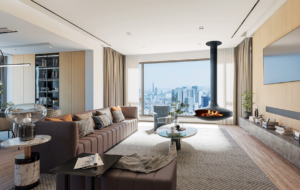
New! Bioethanol fireplaces to install wherever you like
- Advertisement Feature
Privacy Overview
You are using an outdated browser. Please upgrade your browser to improve your experience.
What We're Seeing: Man About 2 Willow Road

House of the Day: House of Silence by Kouichi Kimura Architects

House of the Day: Frank Gehry's Sirmai-Peterson House

Ernö Goldfinger’s 2 Willow Road, built in 1939 in the heart of Hampstead, is widely recognised as a modernist masterpiece. Comedian Tim Ross and musician Kit Warhurst take an alternative, eclectic look at it in their award winning show ‘ Man About 2 Willow Road ‘, which turns the property into a temporary performance space, bringing together design, comedy and music.
13-14 June, 6.30-8.30pm
Photography: The National Trust/Dennis Gilbert
Related stories

Sent from Coventry: a graphic lament to the modernist architecture of 'the city of the future'

The Modern House guide to what to see at Open House London 2018

'Trace': Margaret Howell and ARCA look at what lies beneath modern residential blocks

The Modern House launch 'Ornament is Crime' - a new title from our founders Matt Gibberd and Albert Hill

Terry Frost in St Ives: a new exhibition of the artist's sketchbooks at Belgrave

RA-RA-RA: the Summer Exhibition is the talk of the town

Rethinking Architecture on Film

The London Festival of Architecture opens The Dulwich Pavilion

What We're Seeing: Rietveld’s Masterpiece: Long live De Stijl!

What We're Seeing: Walter Gropius at the Isokon Gallery

What We're Seeing: Clerkenwell Design Week 23-25 May 2017

What We're Seeing: California at the Design Museum

What We're Seeing: Man About The House

What We're Seeing: Visit Hostem's holiday let during London Craft Week

What We're Seeing: 56 Artillery Lane at Raven Row

What We're Seeing: Housing and the City at the AA Gallery

What We're Seeing: Calvin Seibert's Modernist Sandcastles

What We're Seeing: Marie-José Van Hee

What We're Seeing: Sussex Modernism

What We're Seeing: Back to the Future

Balham Circle 350
the website of the Balham Catenians Circle
“Join Me” visit to 2 Willow Road and Fenton House marked by architectural contrasts

The introductory film gave us a good insight into the architect and we were not sure we liked him that much.
After a swift pint at a nearby pup, we set off to Fenton House, which, due to a bit of mistaken map reading by Terry, turned out to be a good 20 minutes walk (up some fairly steep gradients), not the mere five minutes promised!

Fenton House is a 17th-century merchant’s house, regarded as a hidden gem in London. It has its unique charm and ambience, but is not the site of major historical events and is not marked by any architectural genius.
It was bought by a Lady Binning in 1936 and she filled it with her highly decorative collections of porcelain, Georgian furniture and 17th-century needlework, thus demonstrating the wide gulf in taste in London in the thirties and just how radical the Goldfinger house was. The sheer size of the ‘merchants house’ (occupied by Lady Binning alone- save for six servants) compared with Willow Road says something about how wealth and culture were in flux in the first half of the C20.
There are many early keyboard instruments at Fenton House and these are all still played. The sound of virginals and the colours of early 20th-century drawings are a part of the Fenton House ambience and we experienced both.
Our excursion was rounded off with a pub lunch in the Holy Bush, by which time quite heavy rain had set in and we were pleased to enjoy some food and a beer before heading off to Hampstead station, which was mercifully close. TGB
Share this:
Leave a comment cancel reply.
This site uses Akismet to reduce spam. Learn how your comment data is processed .

- Already have a WordPress.com account? Log in now.
- Subscribe Subscribed
- Copy shortlink
- Report this content
- View post in Reader
- Manage subscriptions
- Collapse this bar
What a prickle…
We're sorry – it looks like something's gone wrong

IMAGES
COMMENTS
2 Willow Road is open on Thursdays and Saturdays, March to October, for pre-booked visits. Entry is by hour-long guided tour at 11am, 12pm, 1pm and 2pm. Alternatively, you can explore independently from 3pm, 3.20pm or 3.40pm until the house closes at 4.30pm.
Witness Modernist living. One of only two Modernist houses in the country open to the public, 2 Willow Road is a rare opportunity to experience this school of design integrated into a domestic living space. Guides are on hand to explain how the house transformed a philosophical and artistic movement into a way of life.
Book your visit. Please note you need to book tickets to 2 Willow Road. You can book for today up until 8am. Every Thursday time slots will be available for the next 14 days. Check availability and book. Visits to 2 Willow Road must be booked in advance; discover how to book tickets to explore Ernő Goldfinger's modernist masterpiece.
Thank you for booking your visit. Click below for more information on planning your visit. Find out what to expect from your visit and check which facilities are open here. Please note: 2 Willow Road is open for pre-booked visits only. Pre-booked guided tours start on the hour at 11am, 12pm, 1pm and 2pm.
Discover 2 Willow Road: Ernö Goldfinger's modernist masterpiece in leafy Hampstead. Words by Bradford Watson . If you're like us, you'll take any excuse to visit Hampstead Heath, but did you know that one of London's most surreal houses is right next door?. Admittedly, 2 Willow Road is so unassuming that even we had to double back to find Ernö Goldfinger's Modernist masterpiece of ...
2 Willow Road is the former home of architect and designer Erno Goldfinger, where you can check out midcentury interiors just as he left them. ... 2 Willow Road makes for a unique place to visit next time you're tramping around the heath or looking for some design inspo. Inside, there's all kinds of beautiful features, like the Danish ...
Important notice - 2 Willow Road reopens to visitors on 1 March 2017. 1 March - 29 October 2017. Wednesday - Sunday 11:00 - 17:00. Entry by 1 hour guided tour only at 11:00, 12:00, 13:00 & 14:00 - places limited, tickets only available on day at the door. 15:00 - 17:00 Self guided viewing
2 Willow Road is part of a terrace of three houses in Hampstead, London designed by architect Ernő Goldfinger and completed in 1939. It has been managed by the National Trust since 1995 and is open to the public. It was one of the first Modernist buildings acquired by the Trust, giving rise to some controversy. Goldfinger lived there with his wife Ursula and their children until his death in ...
2 Willow Road is one of three three-storey conjoined concrete houses, built in 1939 at the bottom of a hill beside Hampstead Heath. It was designed and lived in by the acclaimed Hungarian architect, Ernö Goldfinger (1902-1987), with his artist wife, Ursula Blackwell (1909-1991), and their three children.
2 Willow Road. Hampsted, London, Greater London, NW3 1TH. 020 7435 6166. Opening times. 2 Willow Road is open on Thursdays and Saturdays from March to October by pre-booked tour only. You will need to book your visit in advance. Refurbishments. all NT building to close but grounds still open.
2 Willow Road is a modernist house located in Hampstead, north London. Designed by the famous architect Erno Goldfinger in 1939, it is now a National Trust property open to the public for tours. The house and its neighbours, 1 and 3 Willow Road were built as part of a development project in the 1930s. Goldfinger, influenced by the work of Le ...
It's worth a visit to Hampstead Heath to see U.K. architect Erno Goldfinger's striking and controversial 1939 design. Situated at 2 Willow Road in London, this house was the first Modernist structure acquired by the National Trust. Although the building it replaced was a dilapidated ruin, local council and residents fiercely opposed its ...
Aug 21, 2017 | Company News. On the fringe of Hampstead Heath, 2 Willow Road is an archetype of modernist architecture, built and previously lived in by one of the godfathers of modernism: Ernő Goldfinger. The Hungarian-born architect is renowned - and sometimes reviled - for his Brutalist residential tower blocks found across London.
2 Willow Road is not the grandest sounding address in the National Trust's repertoire. But then, it was never meant to be a grand address. Tucked away in leafy Hampstead, it is the Modernist family home of Erno Goldfinger, the Hungarian born architect and furniture designer famous for his imposing, love-it-or-hate-it creation, Trellick Tower, behind London's Portobello Road.
The project was completed in the summer of 1939, shortly before the outbreak of the Second World War. Over half a century later, 2 Willow Road began its life as a National Trust property, introducing members of the public to Modernist philosophy and design and considered to have as much historic and aesthetic value as the period houses around it.
These include No. 2 Willow Road, Hampstead, now one of London's best-known modernist houses, which makes two appearances at the Conference and its follow-on events. Goldfinger in Hampstead. The work of the Budapest-born architect Ernő Goldfinger (1902-1987), Willow Road was from the outset a controversial design.
In Ernö Goldfinger's case, that would be 2 Willow Road, a 1930s modernist home in Hampstead that he designed and built for himself and his family. The man behind Trellick Tower, Balfron Tower and Metro Central Heights applied the same bold, uncompromising, functional and innovative features of his housing projects to his own home.
Ernö Goldfinger's 2 Willow Road, built in 1939 in the heart of Hampstead, is widely recognised as a modernist masterpiece. Comedian Tim Ross and musician Kit Warhurst take an alternative, eclectic look at it in their award winning show 'Man About 2 Willow Road', which turns the property into a temporary performance space, bringing together design, comedy and music.
Ilse Crawford, Gitta Gschwendtner and Roksanda Ilinčić are among six female designers that have created artworks for an exhibition at 2 Willow Road, the London house that belonged to architect ...
On Friday August 14 the "Join Me" excursion was organised primarily to visit 2 Willow Road, a private house on the edge of Hampstead Heath built for himself by 'brutalist" architect Ernö Goldfinger in 1939. Because the house is quite small when compared with others we have visited another building was included in the itinerary,…
Zillow has 21 photos of this $835,000 3 beds, 3 baths, 1,325 Square Feet single family home located at 2609 Willow St #2, Austin, TX 78702 built in 2024. MLS #6736157.
With the exception of 2 Willow Road, most of Goldfinger's opportunities to apply his principles arose after the Second World War. Social housing was a significant theme in his work and he became known for designing high-rise tower blocks. His most notable buildings were Balfron Tower and Trellick Tower in London, which were built in the mid ...
Single Family (condominium/strata) apartment 3 bedrooms, 2 bathrooms, 306 - 8 tippett road toronto c06, ontario, for rent $3,200/Monthly. We use cookies and other technologies for functionality, security, and to provide you with a personalized experience on our online services.
New Jersey. Warren County. Blairstown Township. 07825. 2 Willow Ct. Zillow has 7 photos of this $298,900 1.42 Acres lot located at 2 Willow Ct, Blairstown, NJ 07825 MLS #3880145.